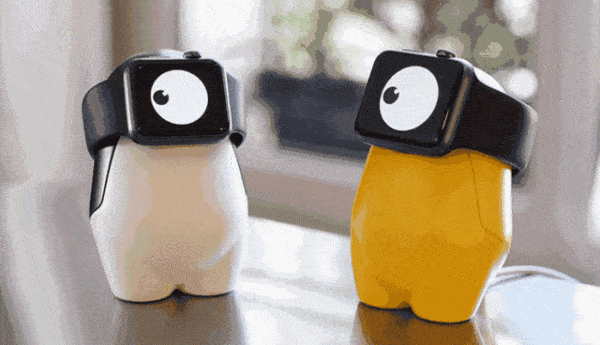文章图片
The short answer is training, but to really grasp why figure skaters can twirl without getting dizzy requires an understanding of the vestibular system, the apparatus in our inner ear that helps to keep us upright. This system contains special sensory nerve cells that can detect the speed and direction at which our head moves. These sensors are tightly coupled with our eye movements and with our perception of our body's position and motion through space. For instance, if we rotate our head to the right while our eyes remain focused on an object straight ahead, our eyes naturally move to the left at the same speed. This involuntary response allows us to stay focused on a stationary object.
简单来说 , 靠训练 。 但要真正弄懂花样滑冰运动员为什么不会转晕 , 我们需要先了解前庭系统 , 即内耳中帮助人体保持直立的器官 。 前庭系统包含特殊的感觉神经细胞 , 可以检测头部运动的速度和方向 。 这些神经传感器与眼球运动 , 以及人们对自身在空间中的位置和运动的感知紧密相连 。 例如 , 如果我们把头向右转 , 而眼睛依然聚焦在前方的物体上 , 眼睛自然会以相同的速度向左移动 。 这种下意识的反应使我们能够盯住静止的物体 。
Spinning is more complicated. When we move our head during a spin, our eyes start to move in the opposite direction but reach their limit before our head completes a full 360-degree turn. So our eyes flick back to a new starting position midspin, and the motion repeats as we rotate. When our head rotation triggers this automatic, repetitive eye movement, called nystagmus, we get dizzy.
转圈则更复杂 。 当我们在旋转过程中移动头部时 , 眼睛开始向相反的方向移动 , 但头部在转动360度之前 , 眼睛就转到极限了 。 因此 , 眼睛在旋转过程中会转到一个新的起始位置 , 而这个动作在旋转的过程中不断重复 。 当头部旋转触发了这种自动的、重复的眼球运动(称为眼球震颤) , 我们就会感到头晕 。

文章图片
Skaters suppress the dizziness by learning how to counteract nystagmus with another type of eye movement, called optokinetic nystagmus. Optokinetic nystagmus occurs in the opposite direction of the nystagmus and allows us to track a moving object—such as a train whizzing by—with our eyes while our head remains in place. As the first few cars of the train move out of view, our eyes jump back to their initial position to follow the next few, and the motion repeats. Skaters can train themselves to engage this opposing eye movement when they rotate to offset the nystagmus and keep the world from spinning.
滑冰者通过学习用另一种类型的眼球运动来对抗眼球震颤 , 从而抑制眩晕 , 这种眼球运动被称为视动性眼震 。 视动性眼震与眼球震颤的方向相反 , 使我们能够在头部保持不变的情况下 , 用眼睛追踪移动的物体 , 如呼啸而过的火车 。 当火车的前几节车厢离开视线时 , 我们的眼睛会跳回到最初的位置 , 跟随接下来的几节车厢 , 重复眼球运动 。 滑冰者可以训练自己在旋转时进行这种相反的眼球运动 , 以抵消眼球震颤 , 防止头晕 。
Professional athletes employ a variety of other strategies to prevent dizziness, including maintaining a uniform speed. The sensors in our vestibular system can detect only changes in speed, so they fail to sense rotation that takes place at a steady pace. If athletes can manage their speed, they encounter dizziness only while they accelerate into and slow down out of a spin.
专业的运动员会采用保持匀速等各种不同策略来防止眩晕 。 前庭系统中的神经传感器只能检测速度的变化 , 因此它们无法感知以稳定速度发生的旋转 。 如果运动员能够控制自己的速度 , 他们只有在加速旋转和减速旋转时才会感到头晕 。
以上关于本文的内容,仅作参考!温馨提示:如遇健康、疾病相关的问题,请您及时就医或请专业人士给予相关指导!
「四川龙网」www.sichuanlong.com小编还为您精选了以下内容,希望对您有所帮助:- 雄鹿|勇士,夺冠第一大热
- 冬奥会|历史性一刻!中国17岁小将来了,中国运动员冬奥会首秀,顺利完成
- 冬奥|冬奥的快乐不只在输赢
- 看台|冬奥会开幕式上的青春力量
- 网友|意大利冬奥冰壶夺金海报现中文“金子”热心网友祝贺+纠正
- 翁厚全|高山滑雪缆车上巧遇翁厚全:代表香港参加冬奥,感到高兴和自豪
- 本文转自:新民晚报一袭闪亮蓝衣|新冬奥·现场丨提前4小时就为看4A,羽生结弦来了!
- 范可新|冬奥“特殊冠军”范可新,买不起2500元的冰刀,一家5口住地下室
- 美国队|美“生化兵”破格参加北京冬奥,中国不得不防!
- 掌声|49岁老将八次征战冬奥:我的双腿老了,但心还年轻!
